April 2025: TB hotspots in the Low Risk Area of England
Updated 11 April 2025
Summary
Hotspots in the low risk area of England are areas defined by APHA, where enhanced surveillance for bovine TB is carried out in both cattle and wildlife. The results of the ongoing surveillance of cattle and ‘found dead’ wildlife along with post-mortem examination and bacteriological culture of badger carcasses removed during licensed culling operations are presented here and will inform future TB control measures in both badgers and cattle within the hotspots.
APHA is continuing to collect and test for TB in ‘found dead’ badger and wild deer carcasses within hotspots that are reported via the ‘web report’ form or to the Defra Rural Services Helpline (03000 200 301) for collection.
Introduction
As part of the 2014 strategy to achieve officially bovine tuberculosis Free (OTF) status for England by 2038, 3 management areas were established:
- high risk area
- edge area
- low risk area (LRA)
Overall, the LRA has a very low and stable incidence of infected herds. The current strategy seeks to rapidly control infection when it arises through high sensitivity testing of affected herds and temporarily enhanced local TB surveillance through radial and hotspot testing, with the aim of preserving the favourable disease status of this area.
A hotspot is an area in the LRA of England with historically low TB incidence where enhanced TB control measures are carried out following detection of lesion- or culture-positive TB herd breakdowns of uncertain origin. These areas are defined and managed by the Animal and Plant Health Agency (APHA), who determine the most appropriate enhanced measures with the aim of eradication of disease in that area. Enhanced measures include, but are not limited to, more frequent cattle surveillance testing and a survey of TB in ‘found dead’ wildlife (badgers and deer).
Previously, areas have been referred to as ‘potential’ or ‘confirmed’ hotspots, depending upon identification, or not, of infection in wildlife populations. This has now changed. APHA is now managing hotspots in ‘stages’ covering cattle, and where relevant, wildlife. Table 1 details this further.
At the time of writing there were 5 active hotspot areas, all of which have infection identified in local ‘found dead’ badger carcasses.
Table 1. Hotspot management stages
| Stage | Definition | Hotspot |
|---|---|---|
| Stage 1: launch | APHA introduce enhanced cattle surveillance and begin stakeholder engagement in the defined area. | |
| Stage 2: review | After sufficient testing of cattle is completed, e.g. two years of six-monthly herd testing, and thereafter annually, there is a thorough review of the available evidence, and controls are reduced or increased as justified. APHA also consider introducing wildlife surveillance. | |
| Stage 3: wildlife involvement | Initiate wildlife surveillance to identify if disease is present in the local wildlife and linked to cattle cases. | HS30 |
| Stage 4: wildlife disease control | Introduce appropriate wildlife disease control based on the evidence gathered from enhanced cattle and wildlife surveillance. |
HS21 HS23 HS28 HS29 |
| Stage 5: closure | Reduce cattle controls when evidence allows, ensure effective completion of any wildlife controls introduced. |
Surveillance for disease in wildlife (stage 3)
Collection of ‘found dead’ wildlife carcasses (badgers and deer) is conducted with the aim of establishing if Mycobacterium bovis is present in the local wildlife population.
This relies on the engagement and cooperation of local stakeholders reporting carcasses via our ‘web report’ form or to the Defra Rural Services Helpline (03000 200 301) for collection. Carcasses can only be submitted to APHA if they are intact, meaning not decomposed or too damaged, and they are in a safe place for collection.
Post-mortem examination (PME) is then conducted, with tissue samples taken for bacteriological culture so that if M. bovis can be isolated, it undergoes Whole Genome Sequencing (WGS) analysis to establish if there are links to the local cattle breakdowns. It is important that as many carcasses as possible are reported to inform epidemiological investigations.
Licensed badger disease control (stage 4)
Badger disease control has been licensed in the LRA by Natural England since 2018 in hotspots where APHA has detected evidence of infection by the same M. bovis strain in cattle and badgers. The boundaries of the badger control intervention areas and the locations of infected badger carcasses are not being released on security grounds. The badger control intervention areas are defined by APHA epidemiologists and ecologists and consist of:
- the minimum infected area (MIA), based on the location of the infected badgers, associated farms and contiguous breakdown areas, plus a radius of the estimated average social group territory based on main sett distribution
- an outer area, also based on estimated average badger social group territory size, surrounding the minimum infected area, to take into account the possibility that infection may have already spread in the badger population - the boundary is adjusted to adhere to natural barriers to badger movement as far as practical to minimise the risk of any possible perturbation effects
As in previous years, APHA carried out TB surveillance using culled badger carcasses to monitor the prevalence of M. bovis infection and to generate information for future operations in the area.
Cage-trapped and controlled shot badger carcasses removed from the cull areas underwent PME, with suitable tissue samples collected for culture of M. bovis in the laboratory. Genotyping and WGS was then carried out on any isolates of the bacterium.
Closure of hotspots (stage 5)
Hotspots 24 (West Sussex), 26 (South Cumbria) and 27 (Yorkshire and Lancashire border) were all subject of evidence reviews. With the cattle disease situation in these areas appearing normal for the LRA, all three were closed in 2024.
Hotspot 21
Hotspot 21 (HS21) was established in September 2016, due to a cluster of TB cattle herd breakdowns emerging from late 2014. It covers 360 km2 (figure 1). Enhanced TB surveillance measures have been implemented in cattle and wildlife across the whole hotspot area, including the collection of ‘found dead’ badger and wild deer carcasses. HS21 is in management stage 4.
The genotype of M. bovis associated with HS21 (17:z, now WGS clade B6-23) had not previously been identified in cattle herds in Great Britain. Investigations concluded that disease is most likely to have been introduced by cattle imported from Northern Ireland.
The novel genotype identified in both cattle and badgers in this area and the WGS analysis provided evidence that local spread of TB had likely occurred within cattle, then spilled over to badgers and eventually circulated between both species.
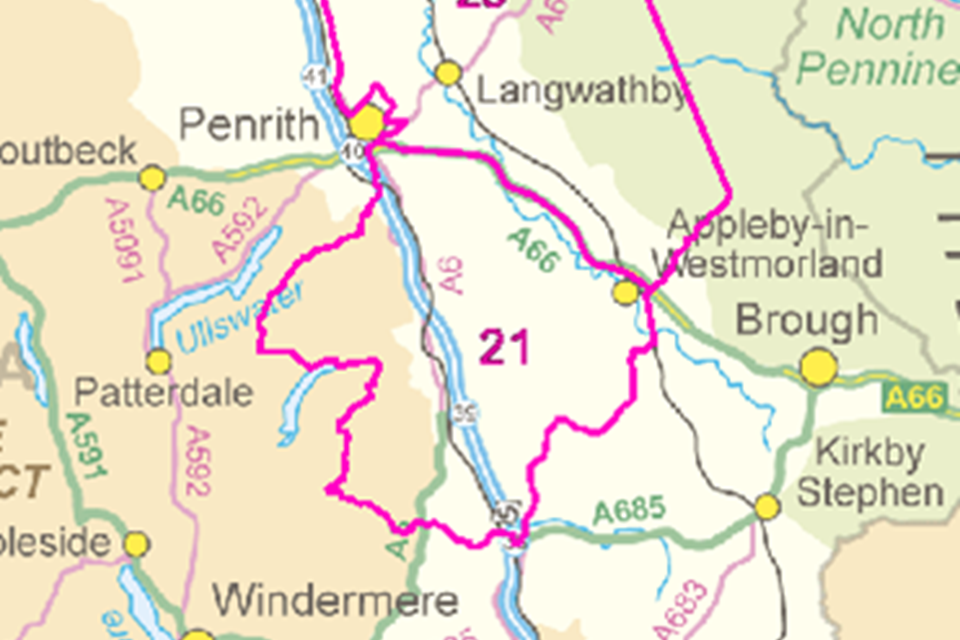
Figure 1 shows hotspot 21, located south of Penrith. It covers 360 km sq.
From identification of the index case in November 2014 to 31 December 2024, there have been 59 breakdowns associated with the hotspot, of which, 19 were OTF-Withdrawn (OTFW) and 40 were OTF-Suspended (OTFS). All herds were eligible to move from six monthly to annual whole herd testing, subject to certain criteria, from October 2023.
Collection of ‘found dead’ badgers and deer is ongoing in the area. From September 2016 to 1 March 2025, a total of 80 badger and 9 wild deer carcasses had undergone post-mortem analysis. There have been 3 M. bovis-positive badgers, all of which were identified in 2017, genetically related to the cattle cases. Not all reported carcasses are collected and submitted for PME. Further detail is provided in section ‘surveillance for disease in wildlife (stage 3)’.
Area 32 – Cumbria
Badger disease control operations in the form of culling were licensed and began within HS21 in September 2018, formally known as ‘Area 32 – Cumbria’. To reflect the lack of infected badgers identified by PME across the area since 2020 (table 2), vaccination has been carried out across the whole 218 km2 intervention area.
The sixth year of operations began in May 2024. Parts of the area have completed four years of badger vaccination and were removed in 2024. Information on the decision-making for badger disease control operations in the area is available within the annual publication: setting the minimum and maximum numbers in badger cull areas: advice to Natural England.
In 2024, 224 vaccinations were administered to badgers trapped by APHA staff. A total of 744 badger vaccinations have been given to date (100 in 2020, 111 in 2021, 140 in 2022, 169 in 2023).
Table 2. Prevalence in the sampled badgers in Area 32 – Cumbria
| Operational year | Carcasses positive for M. bovis | Prevalence |
|---|---|---|
| 2018 | 41 of 369 | 11.1% [95%CI 7.9, 14.3] |
| 2019 | 3 of 313 | 1% [95%CI 0.0, 2.04] |
| 2020 | 0 of 134 | 0% |
| 2021 | 0 of 62 | 0% |
The number of carcasses tested may have been less than the total number removed due to operational reasons. The area where cull operations were conducted differed, based on the evidence available.
Results from the ongoing enhanced surveillance of cattle and ‘found dead’ wildlife will be considered annually to inform future control measures in both badgers and cattle within HS21.
Hotspot 23
A hotspot area (HS23) was established in June 2018, following the disclosure of M. bovis in a cattle herd in southwest Lincolnshire. Due to its proximity to, and shared genotype with, a cluster of OTFW breakdowns in northeast Leicestershire, this hotspot area straddles the LRA (Lincolnshire) and the edge area (Leicestershire and Nottingham). Enhanced TB surveillance measures have been implemented in cattle and wildlife across the whole hotspot area, including the collection of ‘found dead’ badger and wild deer carcasses. HS23 is in management stage 4.
The WGS clade of M. bovis associated with HS23 is B3-11, predominantly found in Cheshire, Derbyshire, Staffordshire, and northeast Shropshire. Investigations concluded that it had originally been introduced to the edge area portion of the hotspot via cattle movements from the Cheshire or Staffordshire area, and then subsequently introduced to the LRA.
After a thorough evidence review in 2024 the boundary of this hotspot was adjusted so that it now covers 860 km2 (figure 2). There is now a neighbouring ‘enhanced surveillance area’, which APHA is monitoring due to the higher incidence of disease than expected. It is not related to HS23.
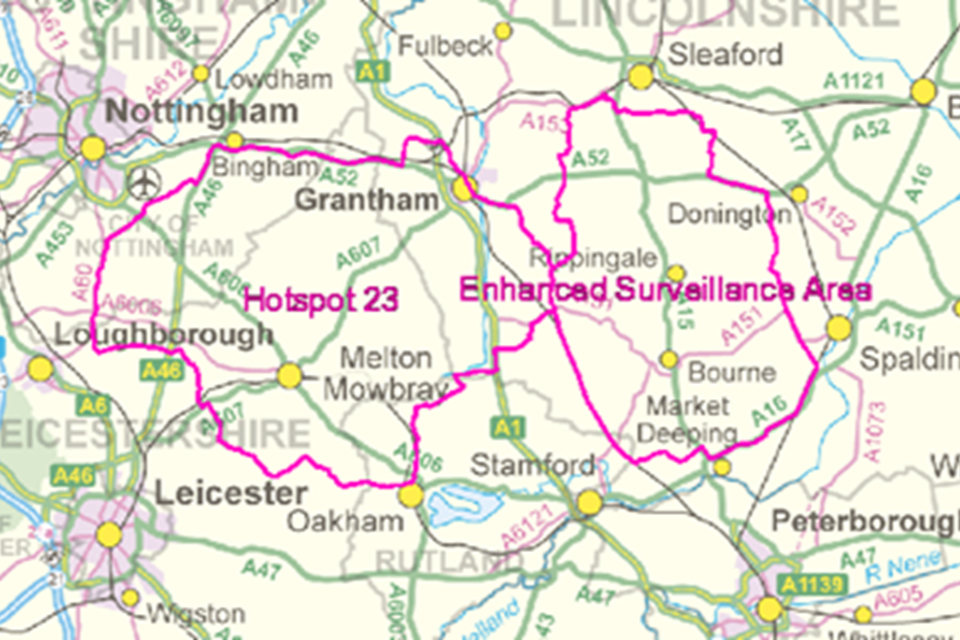
Figure 2 shows hotspot 23, around Grantham. It covers 860 km sq. It also shows the neighbouring Enhanced Surveillance Area.
From 1 January 2018 to 31 December 2024, there have been 163 breakdowns, of which 92 were OTFW and 71 were OTFS. All herds within the hotspot have been subject to six monthly whole herd testing from September 2024.
Collection of ‘found dead’ badgers and deer is ongoing in the HS23 area. From establishment of the hotspot to 1 March 2025, a total of 33 badger and 2 wild deer carcasses have been submitted. There have been 3 badger carcasses culture-positive for M. bovis, all identified pre-2020, 1 located in the edge area portion and 2 in the LRA portion, genetically related to the cattle cases. Not all reported carcasses are collected and submitted for PME. Further detail is provided in section ‘surveillance for disease in wildlife (stage 3)’.
Area 54 – Lincolnshire
Badger culling operations were licensed and began within the LRA portion of HS23 in September 2020, formally known as ‘Area 54 – Lincolnshire’.
The fifth year of operations in the area began in September 2023. Information on the decision-making process for badger culling operations in the area is available within the annual publication: setting the minimum and maximum numbers in badger cull areas: advice to Natural England. Further details of the outcomes of badger culling operations will be published by Natural England in due course. In 2024, 54 badgers were removed from the cull area.
Of the carcasses that underwent PME, 2 (2/46; 4.3%) were positive for M. bovis across the whole area. Results were still pending for 2 carcasses at the time of compiling this report. Table 3 shows the change in prevalence within the sampled culled badger carcasses over the 5 years of badger cull operations in the area.
Table 3. Prevalence in the sampled badgers in Area 54 – Lincolnshire
| Operational year | Carcasses positive for M. bovis | Prevalence |
|---|---|---|
| 2020 | 34 of 139 | 24.5% [95%CI 17.4, 31.6] |
| 2021 | 16 of 156 | 10.3% [95%CI 5.5, 15.1] |
| 2022 | 6 of 80 | 7.5% [95%CI 1.7, 13.3] |
| 2023 | 4 of 89 | 4.5% [95%CI 0.19, 8.8] |
| 2024 | 2 of 46 | 4.3% [95%CI 0.00, 10.2] |
The number of carcasses tested may have been less than the total number removed due to operational reasons. The area where cull operations were conducted differed, based on the evidence available. More information can be found in previously published information.
The results presented here, alongside the ongoing enhanced surveillance of cattle and ‘found dead’ wildlife, will inform future control measures in both badgers and cattle within HS23.
Hotspot 28
A hotspot area (HS28) was established in July 2020 in response to the increase in OTFW breakdowns in the area. It covers 780.4 km2 (figure 3). Enhanced TB surveillance measures have been implemented in cattle and wildlife across the whole hotspot area, including the collection of ‘found dead’ badger and wild deer carcasses. HS28 is in management stage 4.
The WGS clade of M. bovis associated with HS28 is B3-11, predominantly found in Cheshire, Derbyshire, Staffordshire, and northeast Shropshire.
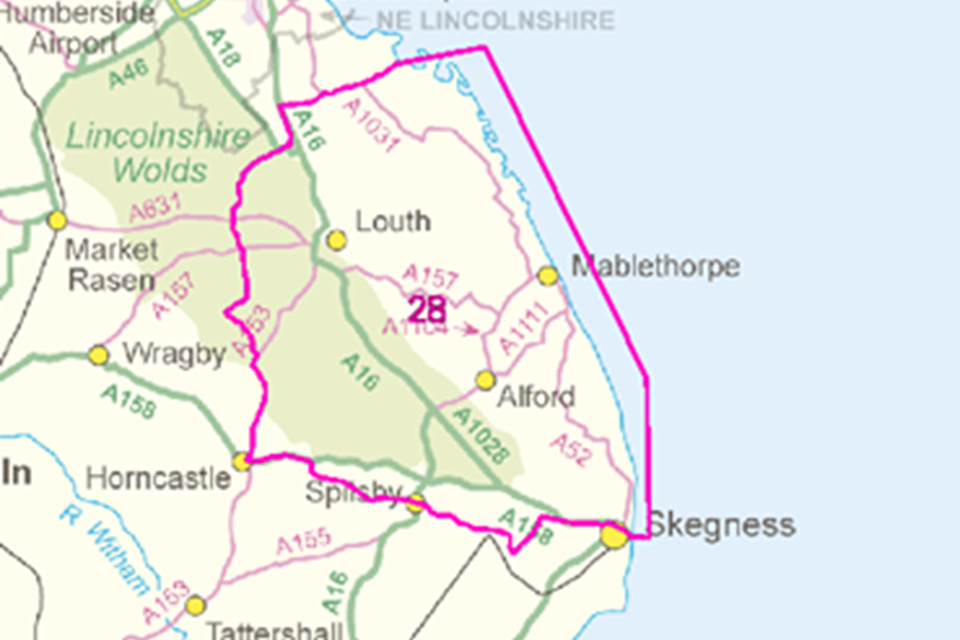
Figure 3 shows hotspot 28, located around Louth. It covers 780.4 km sq.
From 2019 to 31 December 2024, there have been 53 breakdowns, of which 27 were OTFW and 26 were OTFS. All herds within the hotspot have been subject to annual whole herd testing from October 2023. Due to emerging evidence on the extent of disease, all herds will be moving to six-monthly testing in 2025.
Collection of ‘found dead’ badgers and deer is ongoing in the area. From establishment of the hotspot to 1 March 2025, a total of 118 badger and 7 wild deer carcasses have been submitted. There have been 5 badger carcasses culture-positive for M. bovis, identified in 2023 and 2024, all genetically related to the cattle cases. Not all reported carcasses are collected and submitted for PME. Further detail is provided in section ‘surveillance for disease in wildlife (stage 3)’.
APHA-led badger vaccination
Badger disease control operations in the form of badger vaccination began in 2024. This was carried out across 95km2 around the location of M. bovis-positive ‘found dead’ carcasses. This was supplemented by serological testing of a sample of trapped badgers, using the APHA-developed ‘restraint cage’. In 2024, 172 vaccinations were administered to badgers trapped by APHA staff. Of these, 41 underwent serological testing with 12% testing positive for M. bovis infection (5/41).
The results presented here, alongside the ongoing enhanced surveillance of cattle and ‘found dead’ wildlife, will inform future control measures in both badgers and cattle within HS28.
Hotspot 29
A hotspot area (HS29) was established in January 2023 in response to the increase in OTFW breakdowns in the area over the previous years. It covers 510 km2 (figure 4). Enhanced TB surveillance measures have been implemented in cattle and wildlife across the whole hotspot area, including the collection of ‘found dead’ badger and wild deer carcasses. HS29 is in management stage 4.
The WGS clade of M. bovis associated with HS29 is B3-11, predominantly found in Cheshire, Derbyshire, Staffordshire, and northeast Shropshire.
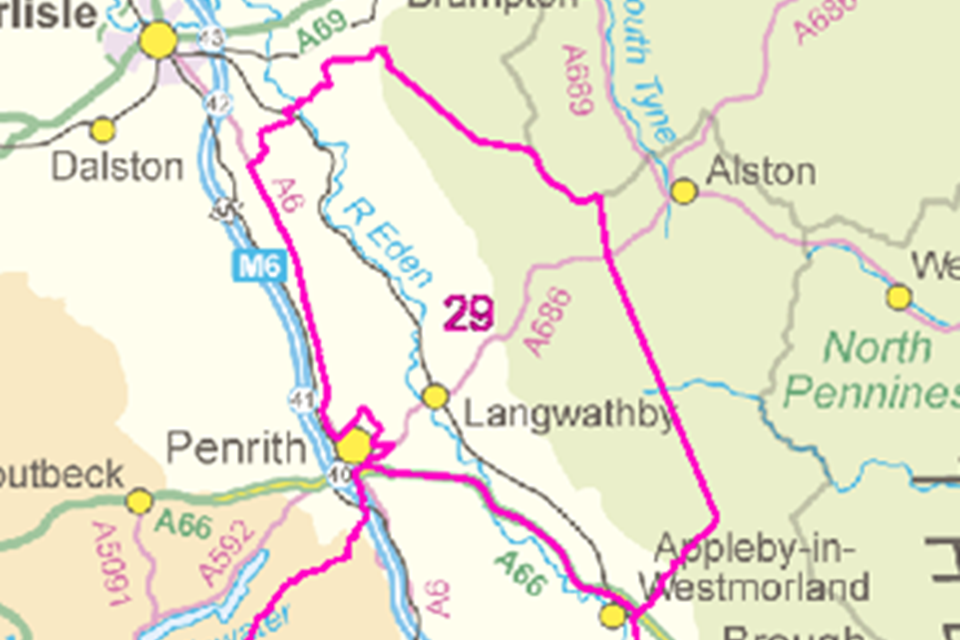
Figure 4 shows hotspot 29, located northeast of Penrith. It covers 510 km sq.
From the index case in 2015 to 31 December 2024, there have been 56 breakdowns, of which 18 were OTFW and 38 were OTFS. All herds within the hotspot have been subject to six monthly whole herd testing from October 2023.
Collection of ‘found dead’ badgers and deer is ongoing in the area. From establishment of the hotspot to 1 March 2025, a total of 41 badger and 8 wild deer carcasses have been submitted. Six badger carcasses were identified in 2023 and 2024 as culture-positive for M. bovis and genetically related to the local cattle cases. Not all reported carcasses are collected and submitted for PME. Further detail is provided in section ‘surveillance for disease in wildlife (stage 3)’.
Area 73 – Cumbria
Badger culling operations were licensed and began in within HS29 in September 2024, formally known as ‘Area 73 – Cumbria’. Information on the decision-making process for badger culling operations in the area is available within the annual publication: setting the minimum and maximum numbers in badger cull areas: advice to Natural England. Further details of the outcomes of badger culling operations will be published by Natural England in due course. In 2024, 576 badgers were removed from the cull area.
Of the carcasses that underwent PME, 23 (23/449; 5.1% [95%CI 3.0, 7.1]) were positive for M. bovis across the whole area. Final results were still pending for 4 carcasses at the time of compiling this report.
The results presented here, alongside the ongoing enhanced surveillance of cattle and ‘found dead’ wildlife, will inform future control measures in both badgers and cattle within HS29.
Hotspot 30
A hotspot area (HS30) was established in early 2023 and covers 200 km2 (figure 5). Enhanced TB surveillance measures have been implemented in cattle and wildlife across the whole hotspot area, including the collection of ‘found dead’ badger and wild deer carcasses. HS30 is in management stage 3.
The WGS clade of M. bovis associated with HS30 is B6-62.
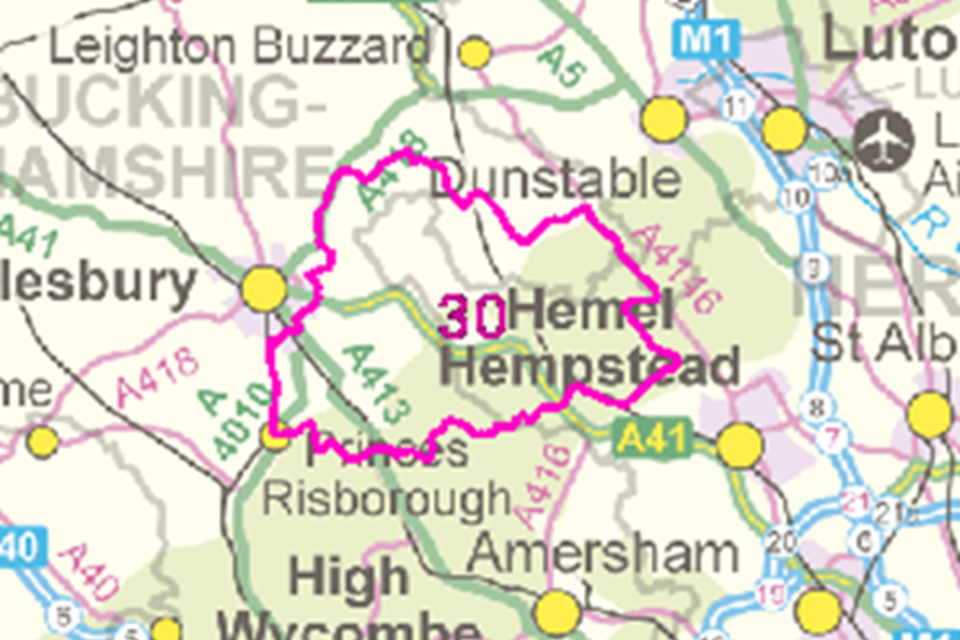
Figure 5 shows hotspot 30, located east of Aylesbury. It covers 200 km sq.
From establishing the hotspot in early 2023 to 31 December 2024, there have been 16 breakdowns, of which 7 were OTFW and 9 were OTFS. All herds within the hotspot have been subject to annual whole herd testing from October 2023.
Collection of ‘found dead’ badgers and deer is ongoing in the area. From establishment of the hotspot to 1 March 2025, a total of 8 badger carcasses have been submitted. Not all reported carcasses are collected and submitted for PME. Further detail is provided in section ‘surveillance for disease in wildlife (stage 3)’.
A single badger was collected during the Southern Edge RTA survey, run by APHA in collaboration with the University of Nottingham, in February 2022 from the portion of west Hertfordshire (LRA) extending into Buckinghamshire (edge area). M. bovis was isolated and identified within WGS clade B6-62, linked to the cattle cases.
